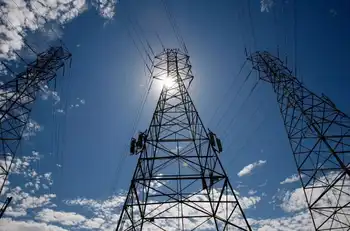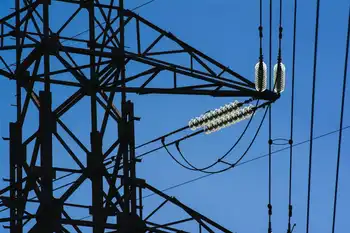EPA reveals 44 higher risk coal ash sites
By Associated Press
Arc Flash Training CSA Z462 - Electrical Safety Essentials
Our customized live online or in‑person group training can be delivered to your staff at your location.

- Live Online
- 6 hours Instructor-led
- Group Training Available
North Carolina has the most sites on the list, a dozen. The largest concentration is near Cochise, Ariz., where there are seven storage ponds.
The agency said it will inspect each of the 44 coal ash sites located near communities to make certain they are structurally sound. The sites are being classified as potentially highly hazardous because they are near where people live and not because of any discovered defect.
"The high hazard potential means there will be probable loss of human life if there is a significant dam failure," said Matt Hale, director of EPA's office of research, conservation and recovery. "It is a measure of what would happen if the dam would fail. It is not a measure of the stability of the dam."
Sen. Barbara Boxer, D-Calif., whose Environment and Public Works Committee held hearings on the coal ash risks, hailed the EPA decision. She said making the most high-risk sites public is essential "so that people have the information they need to quickly press for action to make these sites safer." Boxer had called on the EPA to make the information available.
Burning coal produces ash, which is kept in liquid, known as slurry, in containment ponds or dams. The EPA lists more than 400 such impoundments across the country, but the 44 singled out represent those that are near populated areas, posing a higher danger.
Last year, two days before Christmas, a coal ash pond broke near Kingston, Tenn., sending 5 million cubic yards of ash and sludge across more than 300 acres, destroying or damaging 40 homes. The incident prompted a safety review of storage ponds that hold the waste byproduct near large coal-burning power plants.
The storage ponds hold fly ash, bottom ash, coal slag and flue gas residues that contain toxic metals such as arsenic, selenium, cadmium, lead and mercury, although generally at low concentrations.
Until now, the national coal ash site list has not been provided to the public. Earlier this month the Army Corps of Engineers said it didn't want the locations disclosed because of national security and that it could help terrorists target such facilities. Hale said that issue has been resolved.
The EPA has been to half the 44 sites and expects to issue reports soon, Hale said. The EPA inspections are continuing. The EPA also is reviewing state inspection reports at some of the sites.
The seven ponds near Cochise, Ariz., hold material from the Apache Station Combustion Waste Disposal Facility operated by Arizona Electric Power Cooperative.
The 10 states, the number of sites, and communities are:
• North Carolina, 12 (Belmont, Walnut Cove, Spencer, Eden, Mount Holy, Terrell and Arden).
• Arizona, 9 (Cochise, Joseph City).
• Kentucky, 7 (Louisa, Harrodsburg, Ghent and Louisville).
• Ohio, 6 (Waterford, Brilliant and Cheshire).
• West Virginia, 4 (Willow Island, St. Albans, Moundsville, New Haven).
• Illiniois, 2 (Havana, Alton).
• Indiana, 1 (Lawrenceburg).
• Pennsylvania, 1 (Shippingport).
• Georgia, 1 (Milledgeville).
• Montana, 1 (Colstrip).
Two electric utilities — Columbus, Ohio-based America Electric Power and Charlotte-N.C.-based Duke Energy Corp. — operate nearly half of the coal ash sites on the list. Spokesmen for both companies said the sites are routinely inspected and are safe.
"We go above and beyond to make sure our (coal ash) dams are safe," said AEP spokesman Pat Hemlepp, whose utility has 11 of the ponds on the list. He said the sites are inspected annually by the corporation and more frequently by the individual power plant officials.
Jason Wells, spokesman for Duke Energy, which has 10 sites on the list, said, "We are absolutely confident from our monitoring, maintenance and inspections that the dams have the structural integrity to protect the public and the environment."











